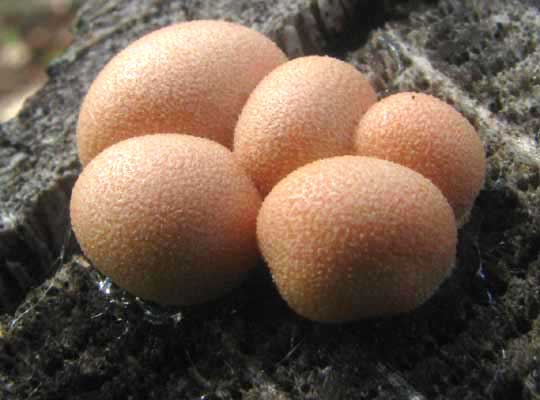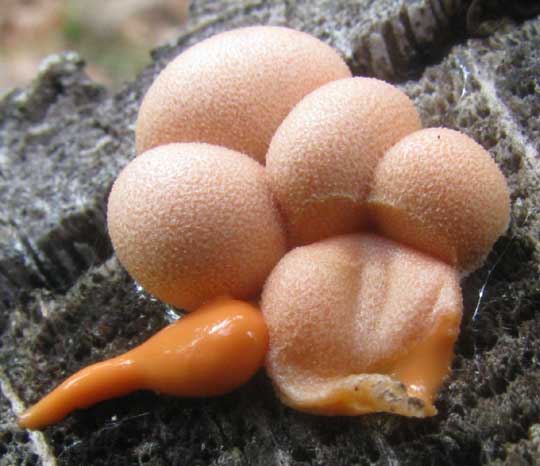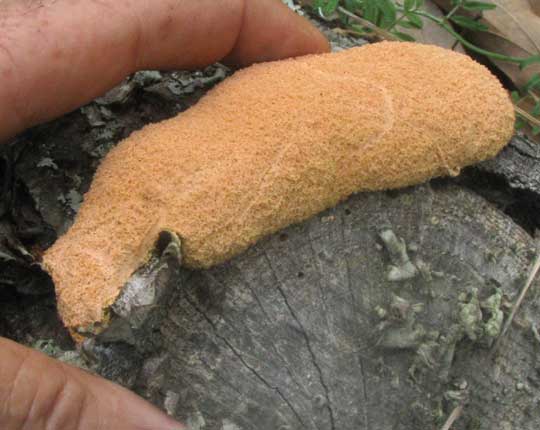Excerpts from Jim Conrad's
Naturalist Newsletter
from the April 8, 2012 Newsletter issued from the forest a few miles east of Natchez, Mississippi, USA; elevation ~400ft (120m), ~N31.47°, ~W91.29°
DOG VOMIT EATS WOLF'S MILK
It all began during my last visit here two and a half years ago when a big oak fell and I chainsawed and axed much of it into kindling for Karen's wood-burning stove. Since then the firewood has remained stacked outside and now is starting to get a bit fungusy. So, I wasn't surprised when a bright cluster of pea-sized, spherical items showed up on some kindling, as seen below:

Wanting to confirm my suspicion that they were puffballs, with my thumbnail I inexpertly tried to slice a longitudinal section across one of the spheres so I could see the thing's internal structure. However, instead of breaking apart it squirted out orangish goo like a squashed turtle egg, as shown below:

Now I knew that, instead of being a fungus, it was probably a slime mold. On the Internet it was easy to confirm that it was probably the slime mold LYCOGALA EPIDENDRUM, commonly known as Wolf's Milk. A few weeks ago we looked at a slime mold in the Yucatán and you may want to review our introduction to them at https://www.backyardnature.net/yucatan/slime.htm.
Our reticulating, fan-shaped slime mold in the Yucatán was in its wandering plasmodium stage. The one on our firewood was in its reproductive stage. What's shown are the aethalia, or fruiting bodies. Wolf's Milk is found nearly worldwide.
The next morning I returned to see how our Wolf's Milk was doing and found in its place what's shown below:

A little Internetting revealed that this was yet a second slime-mold species, probably FULIGO SEPTICA, colorfully known as Dog Vomit, similarly of worldwide distribution. As with the Wolf's Milk, what's shown is the spore-producing fruiting stage, the aethalium.
Did the Dog Vomit eat the Wolf's Milk? It was such a compelling question that I wrote to Tom Volk, the always helpful and idiosyncratically funny mushroom guru at the University of Wisconsin, whose wonderful website is at http://botit.botany.wisc.edu/toms_fungi/.
Tom wrote back the same day: "It does look like the Fuligo has eaten the Lycogala," and added that "You should have stayed up all night to watch :)."
On the Internet I find other references to slime molds eating one another, so maybe that's what really happened. A couple of days after the above pictures were taken, on a nearby log I found Dog Vomit and Wolf's Milk growing side by side as shown below:

However, they never met, and both happily matured.